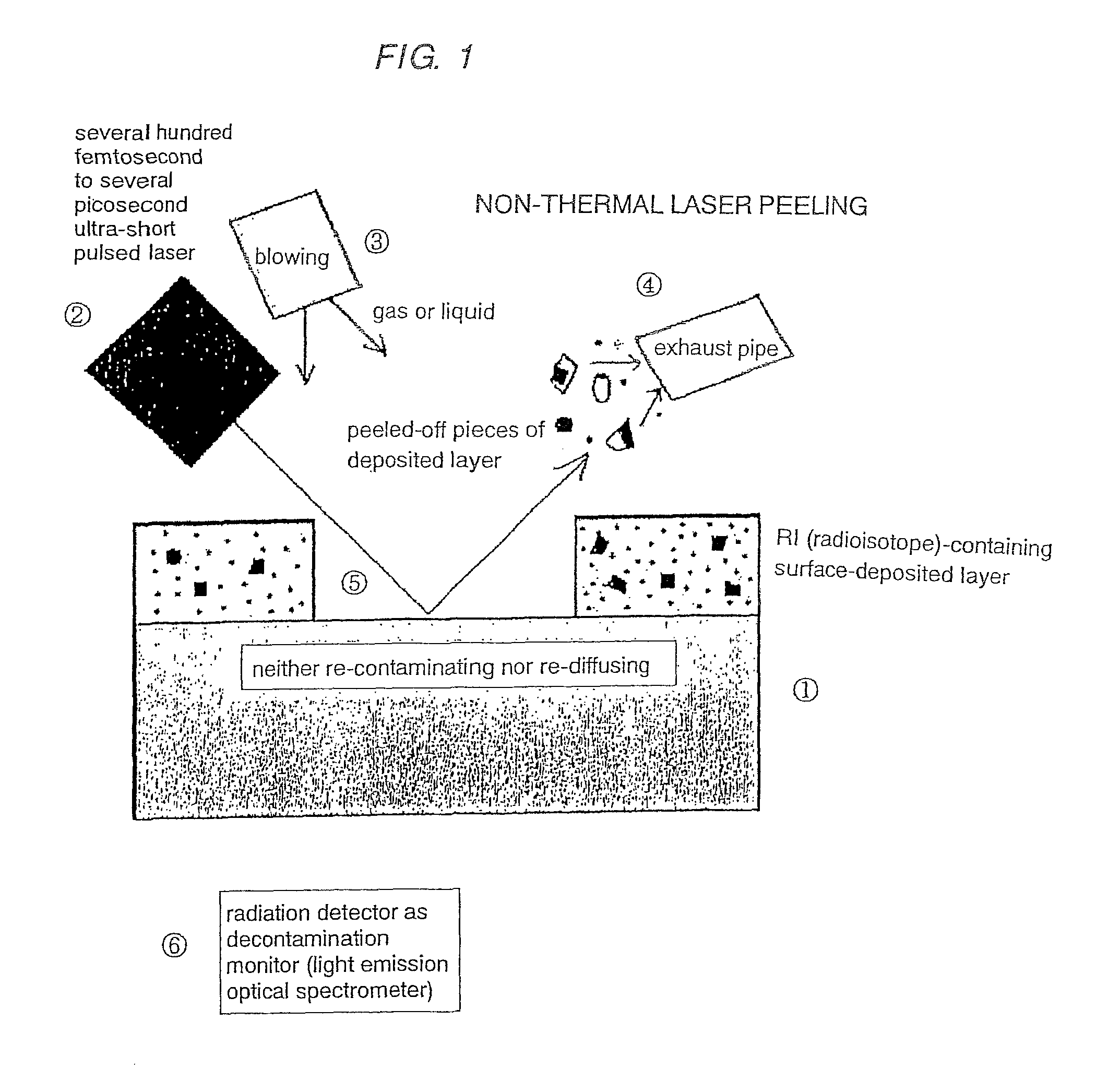Apparatus for decontaminating radioisotope-contaminated surface vicinity region by use of nonthermal laser peeling
a technology of radioisotopes and apparatus, which is applied in the direction of manufacturing tools, cleaning using liquids, nuclear elements, etc., can solve the problems of difficult to achieve perfect decontamination, and radioisotopes to advance into deeper regions along the way, so as to achieve low radioactive level
- Summary
- Abstract
- Description
- Claims
- Application Information
AI Technical Summary
Benefits of technology
Problems solved by technology
Method used
Image
Examples
Embodiment Construction
[0030][FIG. 1]
[0031]1: stainless steel-made non-radioactive structural component
[0032]2: several hundred femtosecond to several picosecond, ultra-short pulsed non-thermal laser
[0033]3: nozzle for blowing a fluid such as highly pressurized, carrying gas and liquid
[0034]4: exhaust pipe for inhaling peeled-off pieces of the surface-deposited layer
[0035]5: stainless steel-made interface that is free of a molten portion, as well as re-contaminating and re-diffusing
[0036]6: light emission optical spectrometer or radiation detector for monitoring the decontamination factor.
[0037][FIG. 2]
[0038]1: non-thermal laser
[0039]2: stainless steel structural component
[0040]3: RI-containing, surface-deposited layer
[0041]4: carrying fluid and a blow-off pipe for RI-removal
[0042]5: exhaust pipe for inhaling peeled-off pieces of the RI-containing, surface-deposited layer
[0043]6: extendable telescopic pipe with compressive resistance
[0044]7: semi-hermetically closed, incomplete water seal
[0045]8: open wat...
PUM
| Property | Measurement | Unit |
|---|---|---|
| pressure | aaaaa | aaaaa |
| light emission optical spectrometer | aaaaa | aaaaa |
| area | aaaaa | aaaaa |
Abstract
Description
Claims
Application Information
 Login to View More
Login to View More - R&D
- Intellectual Property
- Life Sciences
- Materials
- Tech Scout
- Unparalleled Data Quality
- Higher Quality Content
- 60% Fewer Hallucinations
Browse by: Latest US Patents, China's latest patents, Technical Efficacy Thesaurus, Application Domain, Technology Topic, Popular Technical Reports.
© 2025 PatSnap. All rights reserved.Legal|Privacy policy|Modern Slavery Act Transparency Statement|Sitemap|About US| Contact US: help@patsnap.com


